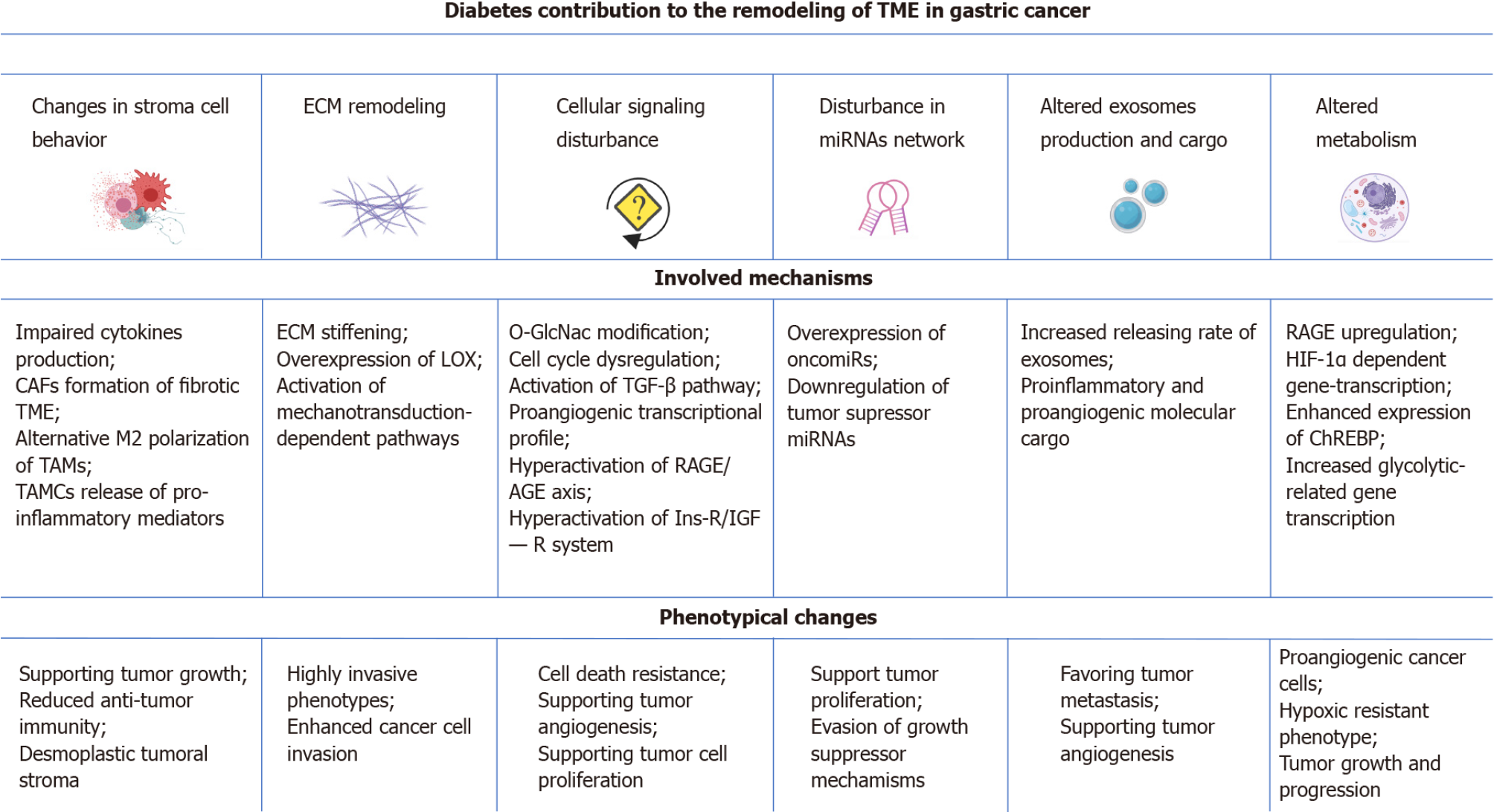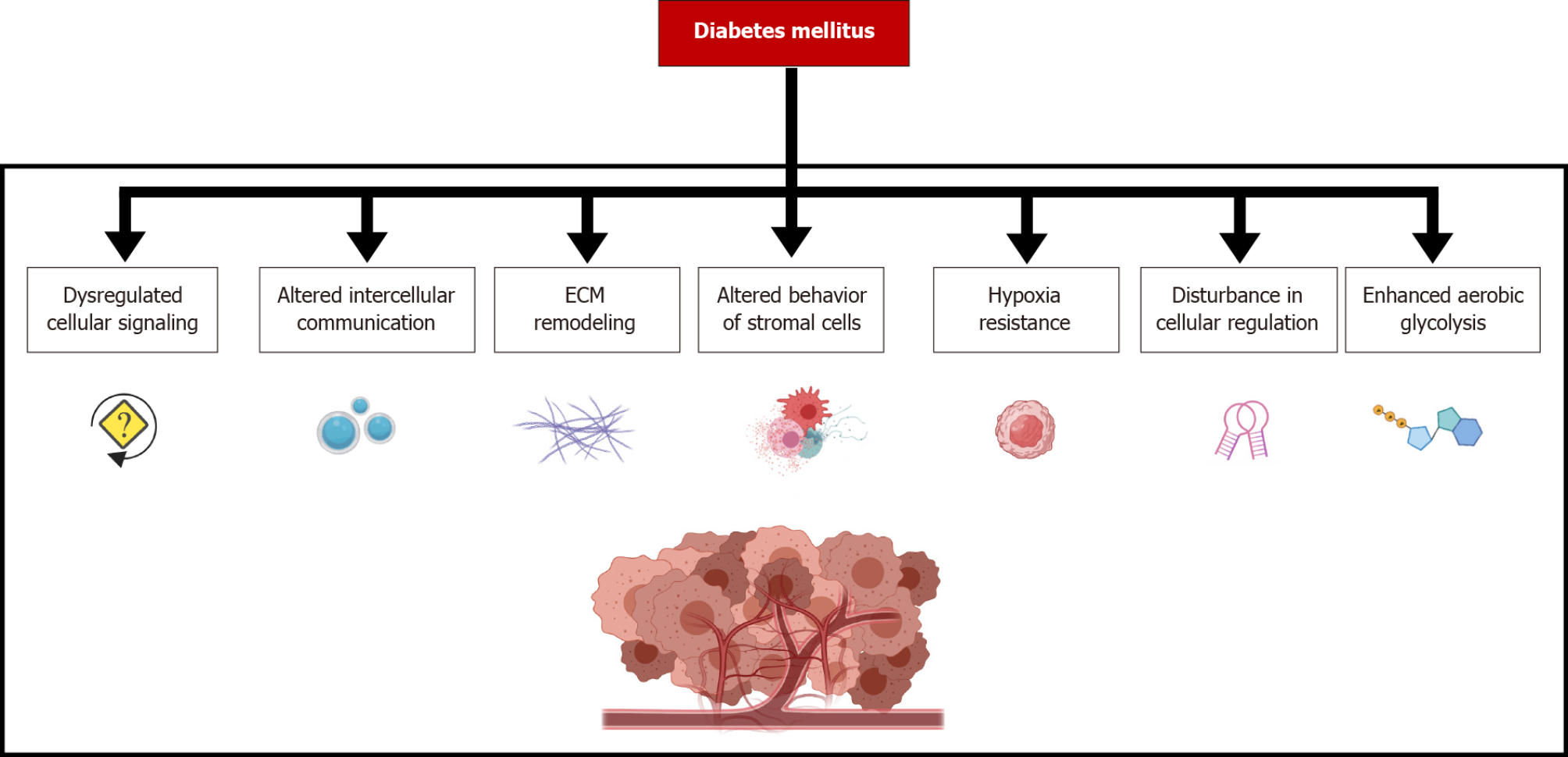Copyright
©The Author(s) 2021.
World J Gastrointest Oncol. Dec 15, 2021; 13(12): 1997-2012
Published online Dec 15, 2021. doi: 10.4251/wjgo.v13.i12.1997
Published online Dec 15, 2021. doi: 10.4251/wjgo.v13.i12.1997
Figure 1 Diabetes mellitus can sculpture the tumor microenvironment of gastric cancer through a myriad of different molecular mechanisms ranging from dysregulation of cellular signaling pathways to marked metabolic disturbances.
TME: Tumor microenvironment; ECM: Extracellular matrix; miRNAs: MicroRNAs; CAFs: Cancer-associated fibroblasts; TAMCs: Tumor-associated mast cells; LOX: Lysyl oxidase; TGF-β: Transforming growth factor β; RAGE: Receptor of advanced glycation end products; AGE: Advanced glycation end product; ChREBP: Carbohydrate-responsive element-binding protein.
Figure 2 The molecular mechanisms involved in the contribution of diabetes mellitus to the remodeling of gastric cancer microenviro
- Citation: Rojas A, Lindner C, Schneider I, Gonzàlez I, Araya H, Morales E, Gómez M, Urdaneta N, Araya P, Morales MA. Diabetes mellitus contribution to the remodeling of the tumor microenvironment in gastric cancer. World J Gastrointest Oncol 2021; 13(12): 1997-2012
- URL: https://www.wjgnet.com/1948-5204/full/v13/i12/1997.htm
- DOI: https://dx.doi.org/10.4251/wjgo.v13.i12.1997










